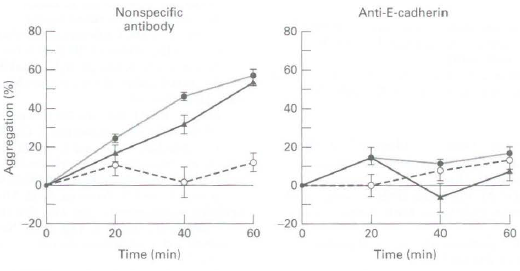Researchers have isolated two E-cadherin mutant isoforms that are hypothesized to function differently from the isoform of
Question:
a. Why do cells transfected with the wild-type E-cadherin gene have greater aggregation than control, untransfectecl cells?
b. From these data, what can be said about the function of mutants A and B?
c. Why does the addition of the anti-E-cadherin monoclonal antibody, but not the nonspecific antibody, block aggregation?
d. What would happen to the aggregation ability of the cells transfected with the wild-type E-cadherin gene if the assay were performed in media low in Ca+2?
(a)

(b)

Fantastic news! We've Found the answer you've been seeking!
Step by Step Answer:
Related Book For 

Molecular Cell Biology
ISBN: 978-1429234139
7th edition
Authors: Harvey Lodish, Arnold Berk, Chris A. Kaiser, Monty Krieger, Anthony Bretscher, Hidde Ploegh, Angelika Amon, Matthew P. Scott
Question Posted:





